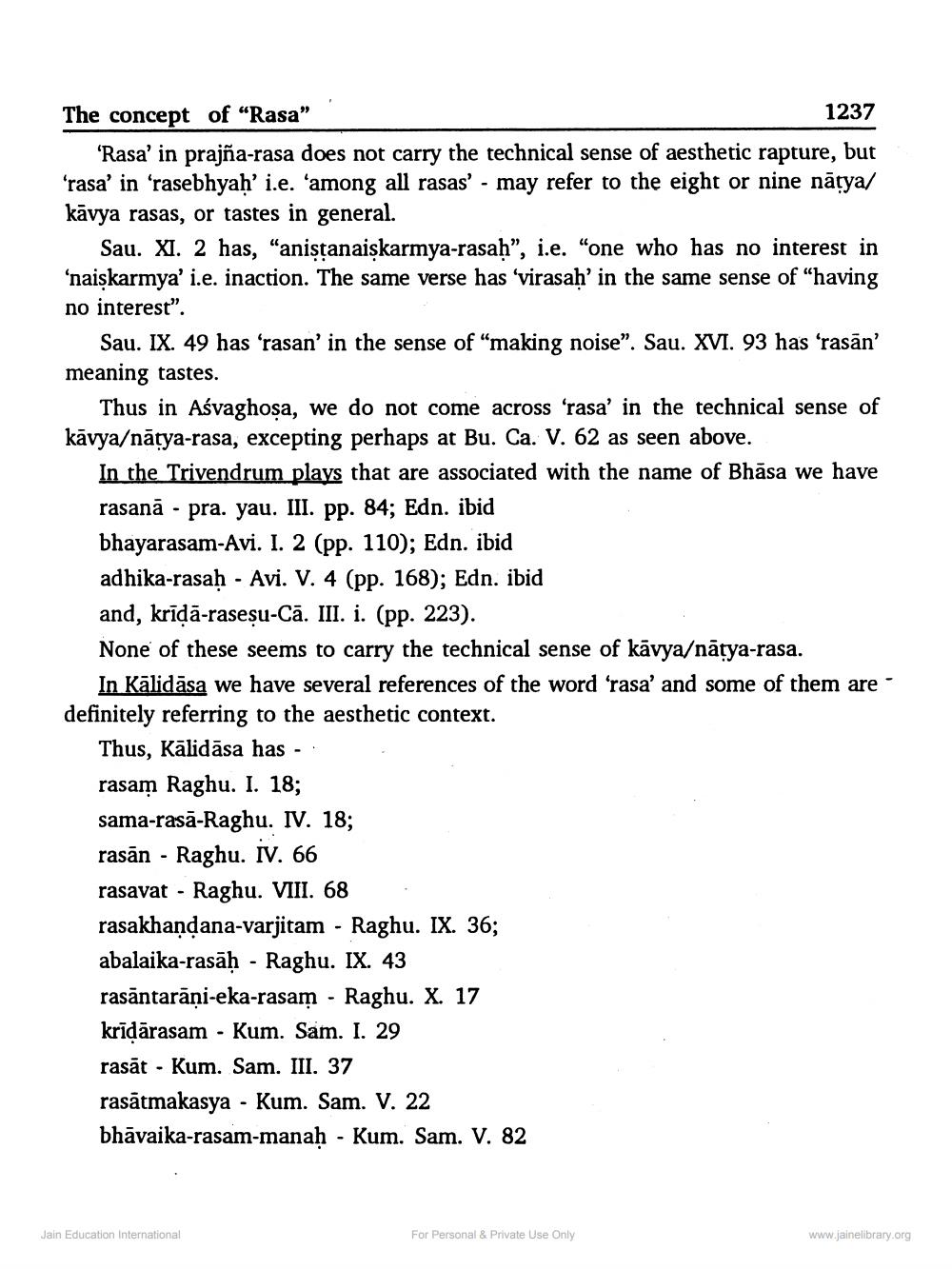________________
The concept of “Rasa”
1237 "Rasa' in prajña-rasa does not carry the technical sense of aesthetic rapture, but 'rasa' in 'rasebhyaḥ' i.e. 'among all rasas' - may refer to the eight or nine nātya/ kāvya rasas, or tastes in general.
Sau. XI. 2 has, "anistanaiskarmya-rasah”, i.e. "one who has no interest in 'naişkarmya' i.e. inaction. The same verse has 'virasaḥ' in the same sense of “having no interest".
Sau. IX. 49 has 'rasan' in the sense of “making noise”. Sau. XVI. 93 has ‘rasān' meaning tastes.
Thus in Asvaghosa, we do not come across 'rasa' in the technical sense of kāvya/nātya-rasa, excepting perhaps at Bu. Ca. V. 62 as seen above.
In the Trivendrum plays that are associated with the name of Bhāsa we have rasanā - pra. yau. III. pp. 84; Edn. ibid bhayarasam-Avi. I. 2 (pp. 110); Edn. ibid adhika-rasaḥ - Avi. V. 4 (pp. 168); Edn. ibid and, krīļā-raseșu-Cā. III. i. (pp. 223). None of these seems to carry the technical sense of kāvya/nātya-rasa.
In Kālidāsa we have several references of the word 'rasa' and some of them are definitely referring to the aesthetic context.
Thus, Kālidāsa has - : rasam Raghu. I. 18; sama-rasā-Raghu. IV. 18; rasān - Raghu. IV. 66 rasavat - Raghu. VIII. 68 rasakhandana-varjitam - Raghu. IX. 36; abalaika-rasāḥ - Raghu. IX. 43 rasāntarāņi-eka-rasam - Raghu. X. 17 krīdārasam - Kum. Sam. I. 29 rasāt - Kum. Sam. III. 37 rasātmakasya - Kum. Sam. V. 22 bhāvaika-rasam-manah - Kum. Sam. V. 82
Jain Education International
For Personal & Private Use Only
www.jainelibrary.org




